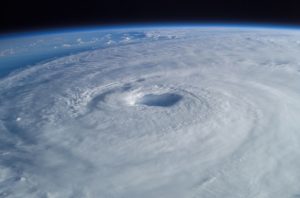 Hurricane Ida hit the central Louisiana shore August 26, triggered disastrous rainfall and flooding throughout the northeast, and left billions of dollars worth of property damages in her wake. The real estate data analysts at CoreLogic predict, and track in real time, storm-related loss estimates. The company's latest report, specifically covering damage in the U.S. Northeast, shows Ida, subsequently downgraded to a tropical storm, caused an estimated $16 billion to $24 billion in insured and uninsured inland flood losses to residential and commercial properties. CoreLogic initially estimated total Ida damages at $27-$40 billion, in a report published last week.
Hurricane Ida hit the central Louisiana shore August 26, triggered disastrous rainfall and flooding throughout the northeast, and left billions of dollars worth of property damages in her wake. The real estate data analysts at CoreLogic predict, and track in real time, storm-related loss estimates. The company's latest report, specifically covering damage in the U.S. Northeast, shows Ida, subsequently downgraded to a tropical storm, caused an estimated $16 billion to $24 billion in insured and uninsured inland flood losses to residential and commercial properties. CoreLogic initially estimated total Ida damages at $27-$40 billion, in a report published last week.
CoreLogic's most recent data reveals $5-$8 billion worth of flood loss to insured properties, while uninsured flood loss for the northeast area is estimated to be between $11 billion and $16 billion—90% in Pennsylvania, New Jersey, New York, Connecticut, and Massachusetts.
The prevalence of below-ground property in both commercial and residential properties in the northeast makes for more-severe interior damages than coastal cities might see, says Shelly Yerkes, Senior Leader, Insurance Solutions at CoreLogic.
“For example, many of the heating, ventilation and air conditioning systems in New York City buildings are in the basements, so contents damage should be substantial.”
New York's 2012 Superstorm Sandy experience can be thanked for the areas' ability to stand up to Ida, say some experts.
Ida sparked record-setting precipitation that overwhelmed storm water drainage systems in urban areas where the average monthly rainfall is approximately three inches and little green space exists to absorb sudden inundations of water. It's essentially the same region flooded by Sandy, an event so severe that it prompted NYC to make infrastructure and home resilience improvements.
“The flooding from Superstorm Sandy was more severe than Tropical Storm Ida,” said David Smith, Senior Leader of Science and Analytics at CoreLogic. “Due to the repairs made in 2012, such as strengthening buildings and infrastructure and addressing deferred maintenance, New York was less vulnerable. Tropical Storm Ida’s effects on New Yorkers would have been worse if we hadn’t conducted these resilience-based repairs after Superstorm Sandy.”
As climate change continues to affect the way storms present, the risk in these hurricane-prone areas will continue to increase, according to the 2021 Hurricane Report from CoreLogic, which revealed almost 8 million homes with more than $1.9 trillion in reconstruction cost value at risk of storm surge damage throughout the 2021 hurricane season.
The authors note: "Based on data from NOAA National Centers for Environmental Information, over the past four decades we've seen a 70-90% increase every decade in total inflation-adjusted losses from weather events in the United States—and this trend isn’t slowing down."
Several federal agencies have stepped in to help homeowners suffering Ida fallout, and experts, after Tropical Storm Ida, discussed disaster preparedness with DS News.
CoreLogic's tracking system, Hazard HQ, is available on the CoreLogic.com website.

 DSNews The homepage of the servicing industry
DSNews The homepage of the servicing industry









